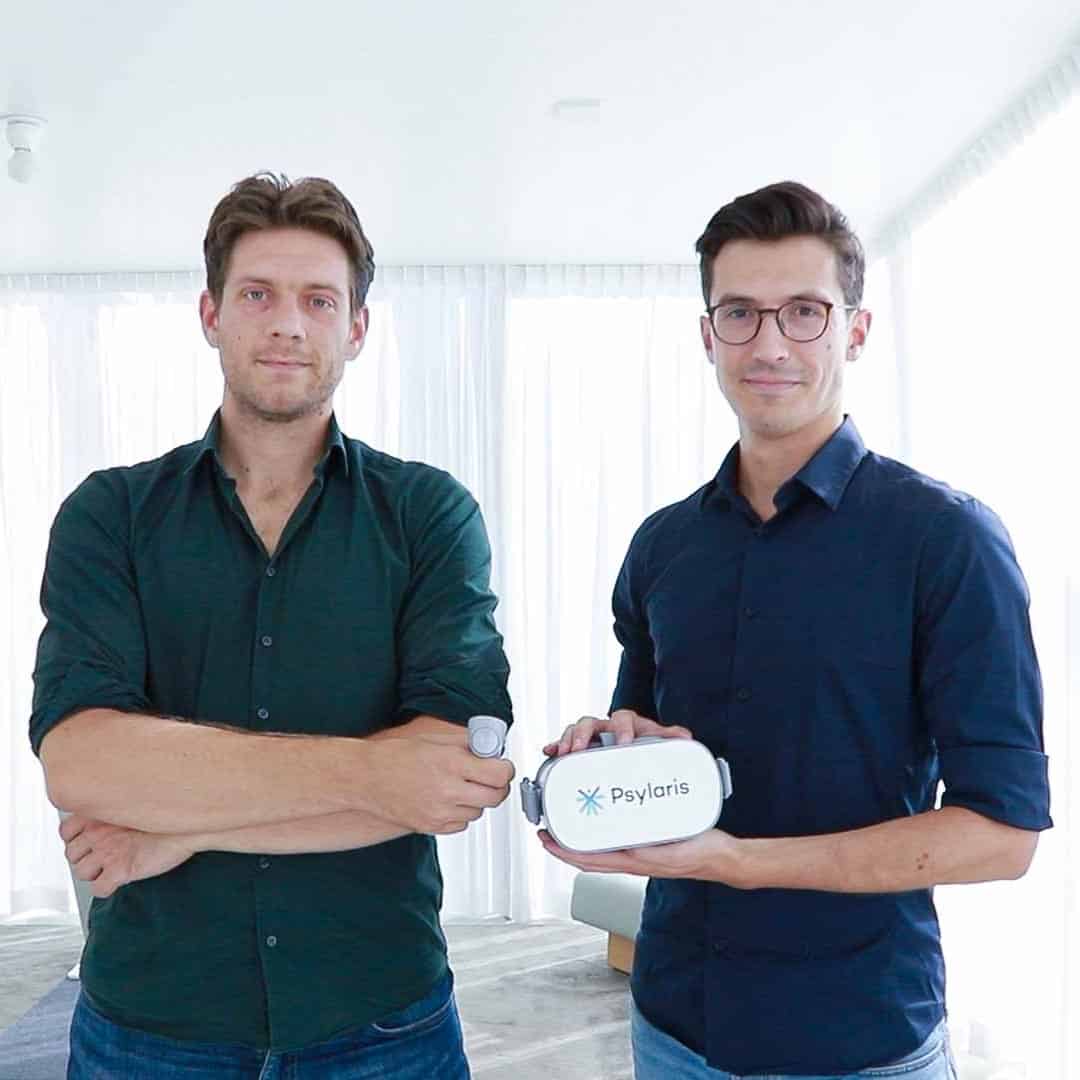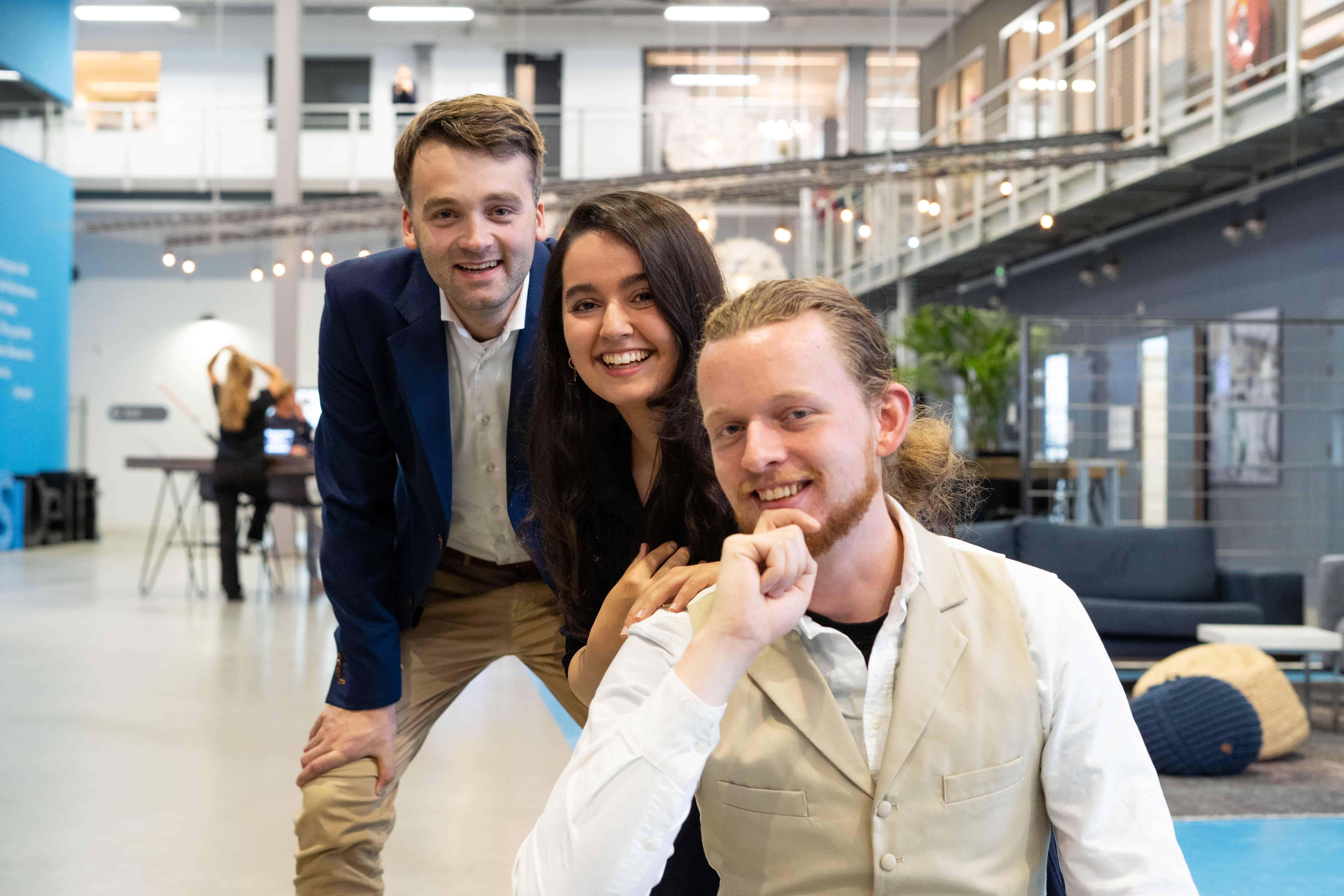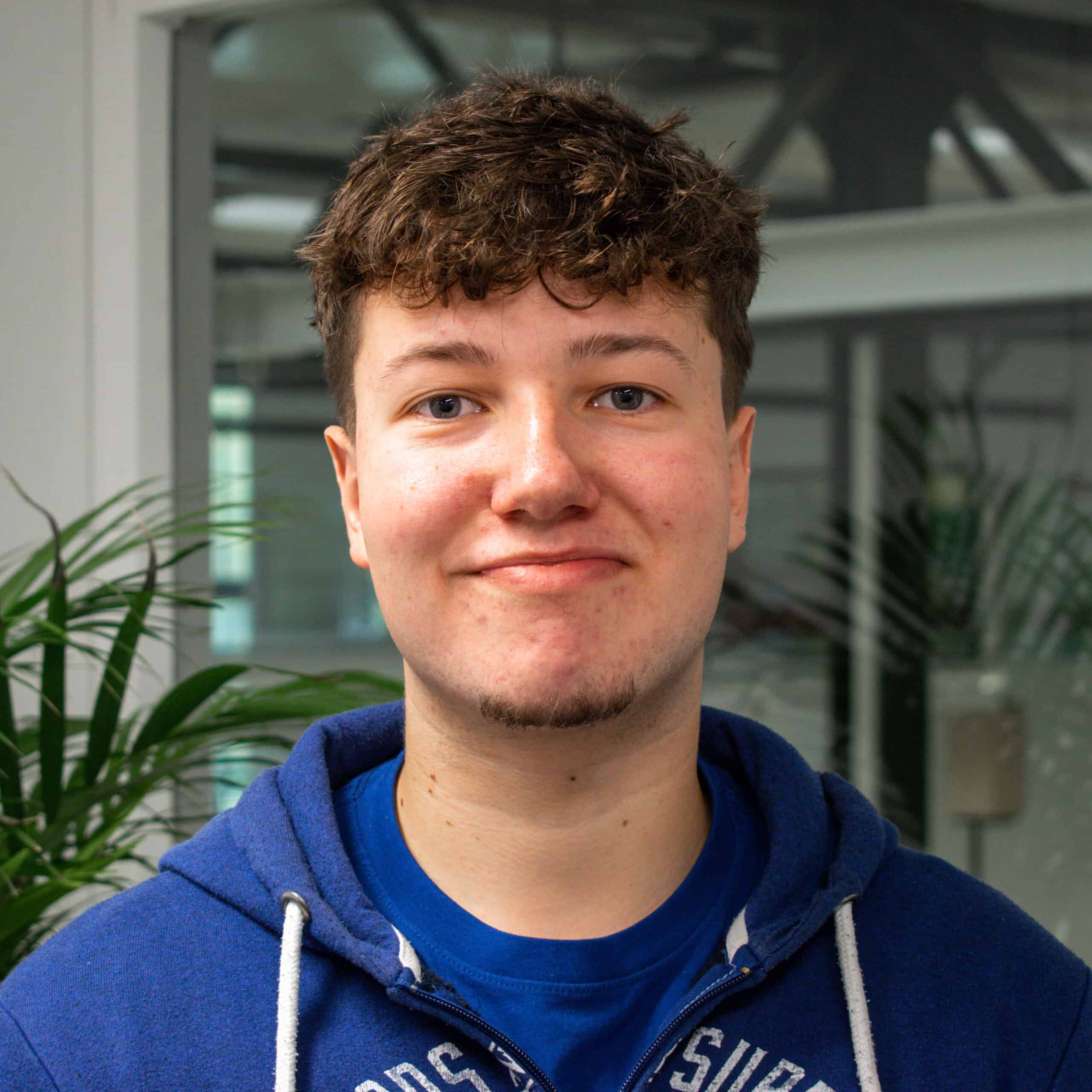
About Psylaris
- Founders: Mike Verhiel and Christoph Lynen
- Founded in: 2018
- Employees: 14
- Money raised: -
- Ultimate goal: Increasingly supporting physical practitioners by improving the virtual practitioner
Long waiting lists, declining turnover, and increasingly fewer deployable specialists. A selection of the problems that mental health institutions have been facing in recent years. Christoph Lynen and Mike Verhiel came up with a solution in the form of VR glasses. This way, you can work on your recovery at home in a virtual environment of your choice.
“People’s self-esteem goes up so much. In combination with the expertise of the practitioner, this shortens waiting times for care,” explains Mike Verhiel, CEO of Psylaris. In this installment of start-up of the day, Verhiel explains exactly how his solution works.
How did you come up with the idea?
“The idea initially came from my co-founder Christoph Lynen. A few years ago, he decided to go to a park with a number of friends to catch up. Coincidentally, these friends of Christoph all had a connection with the mental health care system. In those days, there was a lot of talk about mental health care. It is not expected that these problems will be resolved soon. You only had to open the newspaper and the front pages were filled with articles about the long waiting lists and the serious shortage of practitioners. The situation seemed pretty hopeless. Reason enough for us to think about scalable solutions that can solve the problem as quickly as possible.”
How did you get started?
“At the start, we wanted to develop a product that the practitioner can use in his treatment room. We soon realized that our software had to be extremely efficient. Otherwise, you would have to reduce both the costs of the practitioner and the software. We found a better solution in an application that the client can use independently. Treatments can still take place in a practice, but a therapist can also recommend that a client work on his problems at home. The first step was to apply the EMDR protocol. This is a therapy for people who have suffered a trauma, such as an accident or a violent incident.”

What does the product look like?
“With our application, you can undergo EMDR treatment at home using VR glasses. This leads to more progress in patients because more sessions can take place. Besides, we also unburden the mental health authorities. This is because the accelerated treatment pathways mean that a spot is available more quickly for other people who also need this care. With our application, patients can go from one treatment a week to three full-fledged treatments a week.
When you put on these VR glasses, you go through the same steps as during a physical EMDR consultation. It offers even more. You can also select a soothing environment for the treatment. This can be in a luxurious apartment or a relaxing environment, for example. The structure of the session is the same but in a different setting.”
What applications are integrated into the glasses?
“The EMDR protocol is of course included, as well as exposure therapy, addiction, and relaxation protocols. And starting in February, we will also make medical hypnosis available. This large, varied range of applications distinguishes us from the competition. We want to provide patients with as many tools as possible to be able to work independently on their own treatment.”
“Our goal is to support physical practitioners more and more by improving the development of the virtual practitioner”
Mike Verhiel, CEO Psylaris
What did experts think about your idea?
“Treating clients online was still a strange concept for practitioners before the corona crisis. They very much had the idea that a practitioner had to be present for every treatment. We often had ‘no’ for an answer, until we entered into a partnership with a party with whom we are still together. Slowly but surely, that party started to research more and more. And as it turned out: patients felt much better after such an autonomous EMDR treatment.”

What challenges have you encountered?
” ’Can a client really treat themselves with a therapy that I, as a practitioner, have studied for years to perform?’ was a question we were often asked. After that, we saw that people’s perception of our application quickly changed when they started doing it themselves. There was also the fear among some that they would lose their jobs because of this application, which was unjustified because the practitioner is still needed to guide the process.
We saw another challenge in finding people with expertise to create those self-learning algorithms. Not only in creating but also to be able to analyze data and continuously improve the product. In the end, we have now put together a good team of fourteen people. Although this was definitely one of our biggest challenges. In 2023 we hope to employ at least 35 people.”
What are other goals for the future?
“Currently we are active in the Netherlands, Belgium, and Germany. Although, we do not yet have that many customers in Germany compared to the Netherlands and Belgium. Though, we have already seen that it’s an interesting market, where the quality of healthcare is very high as well. In the Netherlands, we have been struggling for some time with the reimbursement process of health insurers. In Germany, there is a step-by-step plan for this, which also makes it more attractive for us to offer our product there as well. A sneak peek is – we’re also looking at the Scandinavian countries.”

